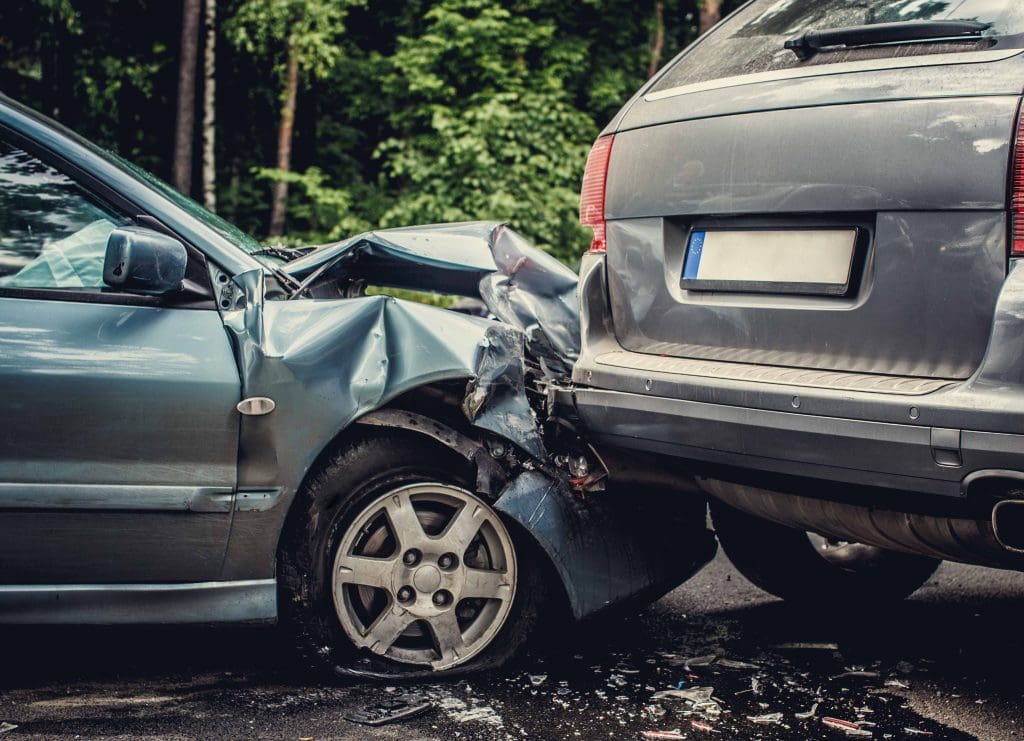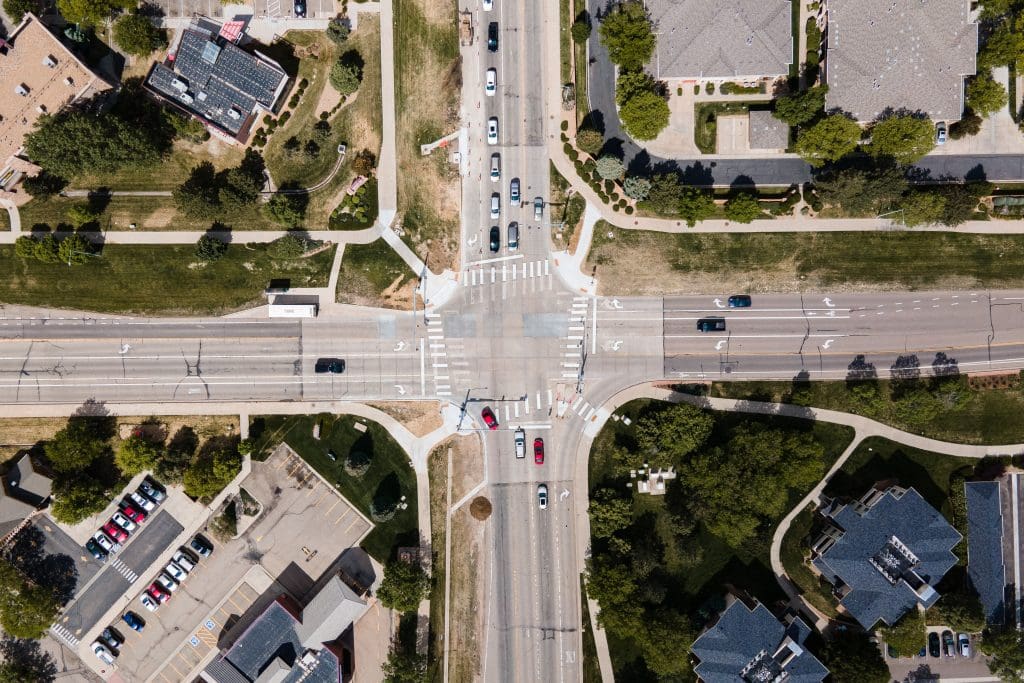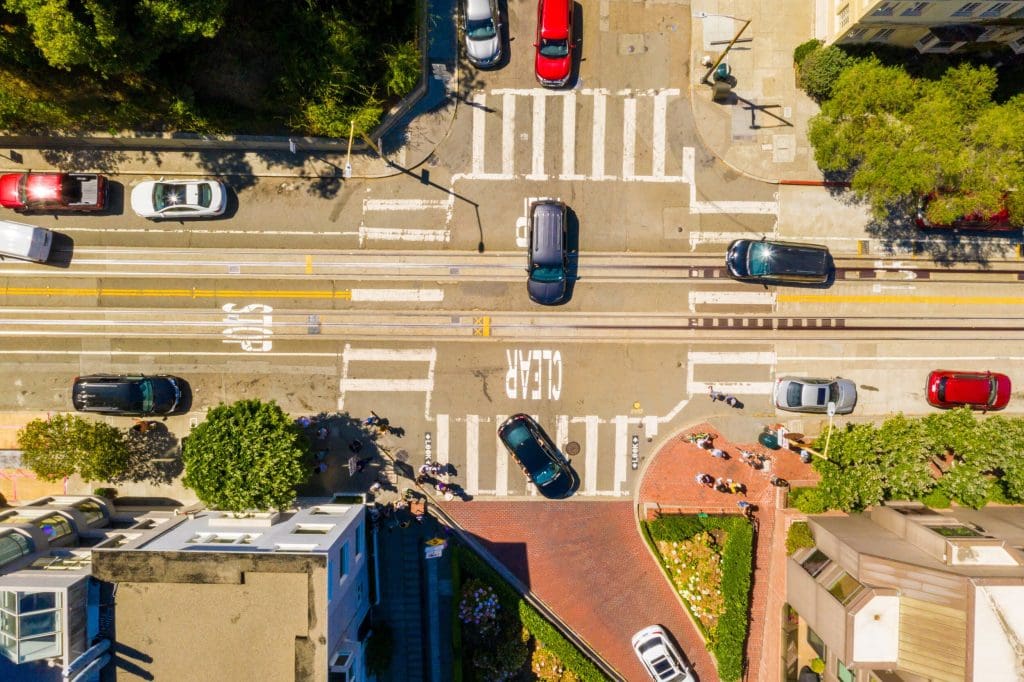Intersection accidents are frequent and often complex. The main concern is determining fault for legal and insurance purposes. This process involves understanding common causes, traffic laws, and evidence collection. This article will guide you through these aspects to help you understand faults in intersection accidents.
Common Causes of Intersection Accidents

Collisions at intersections arise where two or more roadways intersect, exposing these points to the heightened risk of vehicular incidents because of merging traffic streams. The prevalence of such accidents is often attributed to factors like distracted driving and exceeding speed limits as primary culprits. Drivers who divert their attention with mobile devices or other distractions experience delayed response times, which can result in them missing essential signals from traffic lights or movements by adjacent drivers, thereby increasing the likelihood of deadly intersection collisions.
Neglecting to give proper right-of-way constitutes another significant contributor to crashes within intersection zones. Often this occurs when motorists either overlook traffic rules intentionally or out of ignorance, thus creating dangerous scenarios that lead vehicles on a collision course. Carelessness and reckless behavior behind the wheel frequently precipitate these events through flagrant transgressions against established roadway regulations.
The dangers inherent in speeding Compound risks associated with junctions since greater velocity diminishes driver reaction opportunities and intensifies crash impacts. Combining issues like inattentive driving, excessive speeds, and disregarding yielding norms sets up precarious conditions prone to mishaps at crossroads. This highlights an imperative for vigilance among all operators on public roads along with strict compliance with stipulated vehicular codes.
Determining Fault in an Intersection Accident
Assessing responsibility in intersection accidents necessitates a thorough investigation into the specific details of the incident. Typically, liability falls on drivers who neglect to comply with traffic laws, which may contribute to collisions and resultant injuries or damages. Crucially, this entails evaluating each driver’s adherence to traffic signals, stop signs, and right-of-way regulations to pinpoint where the fault lies.
The process of establishing who is at fault in an accident requires meticulous attention to understanding how it occurred. This involves examining potentially responsible behaviors exhibited by drivers such as distractions while driving, speeding past limits allowed by law, or failing to properly yield when necessary.
For victims involved in a traffic collision seeking compensation for their losses and suffering due to an accident, knowledge about respective obligations under prevailing traffic rules combined with gathering conclusive evidence is paramount. It aids in substantiating claims against other parties whose negligence might have caused the mishap within intersections governed by these regulations.
Role of Traffic Laws
Abiding by traffic laws plays a crucial role in establishing who is to blame for accidents at intersections. Throughout the United States, drivers rely on traffic signals and stop signs to navigate intersections safely. If a driver disregards a red light or neglects their duty to yield when required, this behavior greatly affects the determination of fault should a collision occur. Laws associated with traffic lights mandate that motorists must give way to pedestrians and other vehicles that have the right of way as an essential measure against accidents.
When these rules are not observed, there is an increased likelihood of causing collisions, which consequently places greater liability on the transgressor. Drivers must comprehend and adhere strictly to all regulations related to yielding and obeying intersection-related traffic signals in order to avoid being responsible for any mishaps during intersection incidents.
Evidence Collection
The determination of fault in intersection accidents hinges heavily on the presence and quality of evidence. It is essential to collect diverse types of evidence including statements from independent witnesses, recordings from traffic and dashboard cameras, videos taken by cellphones, as well as functioning CCTV camera footage. These resources are invaluable for corroborating accounts and pinning down liability.
Incident reports authored by police officers also play a pivotal role in shedding light on the circumstances surrounding an accident at an intersection. They often contain vital information concerning the right-of-way determinations, crash dynamics, and any potential driver negligence that might have contributed to the incident. Scrutinizing all available evidence becomes crucial when there’s a dispute over who was at fault during such accidents.
For victims involved in these collisions at intersections, meticulously analyzing this collected proof allows them to construct compelling arguments that support their claims regarding who bears responsibility for the accident.
Types of Intersection Collisions

Various forms of intersection accidents exist, each with distinct characteristics and typical reasons for occurring. Among the most prevalent is the T-bone accident, alternatively known as a broadside collision. This type arises when one car impacts another’s side, commonly due to neglecting yield signs or disregarding red lights at intersections, causing an intersection crash.
At intersections, rear-end collisions are also notably common. These happen primarily when a vehicle abruptly stops and the following driver does not manage to respond promptly enough to avoid impact—frequently leading to car accidents caused by such unforeseen halts.
While head-on collisions occur less often at intersections compared with other types of crashes, their outcomes can be particularly dire since they involve vehicles colliding frontally while moving in opposite directions. Recognizing different kinds of intersection collisions is essential for understanding contributory factors and assigning responsibility in cases involving vehicles clashing within an intersection setting.
Impact of Shared Fault on Compensation
In the event of intersection accidents, the apportionment of fault plays a pivotal role in determining compensation for accident victims. The settlement amounts offered by insurance companies are often adjusted based on each party’s share of responsibility. Consequently, if individuals involved in an accident at an intersection carry any blame, their compensation could be diminished relative to their fault.
The process for assessing shared liability includes various frameworks like pure comparative negligence and modified comparative negligence as well as contributory negligence. With pure comparative negligence, even if one is largely at fault in an intersection accident, one can still receive damages inversely related to one’s level of responsibility. In contrast, modified comparative negligence rules prevent recovery altogether when someone’s guilt reaches 50% or above. While with contributory negligence, just being marginally at fault (1% or more) may completely obstruct a person from claiming damages.
If you bear partial blame following an accident within an intersection, it might not only impact your ability to get proper reparation but also lead to pricier insurance premiums due to higher perceived risks by insurers. Hence securing legal support is essential for maneuvering through such intricacies effectively ensuring that one gets equitable restitution after enduring such misfortune involving vehicle collisions at intersections where questions around carelessness and blameworthiness arise.
Seeking Legal Help After an Intersection Accident

Accident victims need to seek the counsel of a legal expert following an incident at an intersection to safeguard their rights and adeptly manage intricate claims. Such professionals can greatly influence insurance claim results as well as any ensuing legal matters by empowering victims with knowledge about their entitlements and aiding them in obtaining just compensation.
Turning to 1-800 Ask Gary can be especially advantageous, given that they offer complimentary referral services directing individuals to proficient medical experts and accomplished attorneys. This assistance enables those affected by accidents to effectively handle their cases while guaranteeing access to indispensable support.
What 1-800-ASK-GARY® Offers
1-800-ASK-GARY® provides a suite of supportive services tailored for individuals affected by accidents. This includes complimentary referrals to both medical experts and skilled lawyers who can offer vital care and legal guidance respectively. Their helpline dedicated to auto accidents and injuries is available around the clock, ensuring that accident victims have constant access to crucial resources whenever they’re needed.
This service connects those involved in accidents with a network of certified professionals ready to render prompt and impactful aid following an incident. Such support is indispensable for assisting accident victims in managing their healing journey as well as the intricacies of any associated legal actions effectively.
Benefits of Using 1-800-ASK-GARY®
1-800-ASK-GARY® delivers round-the-clock, free-of-charge assistance that is both sensible and empathetic, guaranteeing that accident victims always have support at their disposal. Their track record in helping clients obtain over two billion dollars highlights their proficiency in securing just compensation for those affected by accidents.
The service’s quality and dependability are evident through its outstanding average customer satisfaction score—4.9 out of 5 stars based on 447 reviews. This acclaim underscores the immense value 1-800-ASK-GARY® provides accident victims who require legal and medical guidance.
Long-Term Consequences of Intersection Accidents
Accidents at intersections can lead to profound and enduring ramifications. Those affected by these accidents typically encounter hefty financial demands, including expenses for medical care, lost income due to inability to work, and costs associated with continual treatments. For these reasons, obtaining legal support is essential in recovering adequate compensation. When individuals are involved in a pedestrian accident within an intersection setting – often occurring at crosswalks – the resulting injuries can be grave and require significant healthcare attention.
To economic concerns, victims frequently face lasting social and physical obstacles that may encompass persistent psychological conditions like travel-related phobic anxiety. The persistence of such effects underscores the necessity for accurately determining who is at fault in an accident and pursuing fitting compensation that facilitates one’s path toward healing.
Preventative Measures to Avoid Intersection Accidents

Ensuring safety at intersections requires vigilant and attentive driving. Adopting defensive driving techniques, which entail remaining watchful and minimizing distractions, is crucial for reducing the chance of accidents. By focusing on the road and refraining from engaging in activities like texting or talking on a phone while driving, one can greatly minimize intersection collisions.
Adhering to traffic signals and respecting the right of way are critical strategies to prevent intersection incidents. Motorists must resist hurrying through amber lights and always make sure they come to a complete stop where there are stop signs before proceeding with caution. Executing an additional look left-right-left before crossing an intersection aids in detecting any incoming vehicles, thus helping drivers sidestep potential crashes.
It’s important for drivers not to switch lanes when approaching or within intersections due to regulations against these maneuvers intended for motorist safety. When merging into moving traffic from an intersection, cautiously entering gives motorists more time to identify unforeseen dangers that could lead to accidents. Consequently, lowering their occurrence rate. These proactive measures must be diligently practiced by all vehicle operators to ensure our streets remain safe for everyone traversing them.

